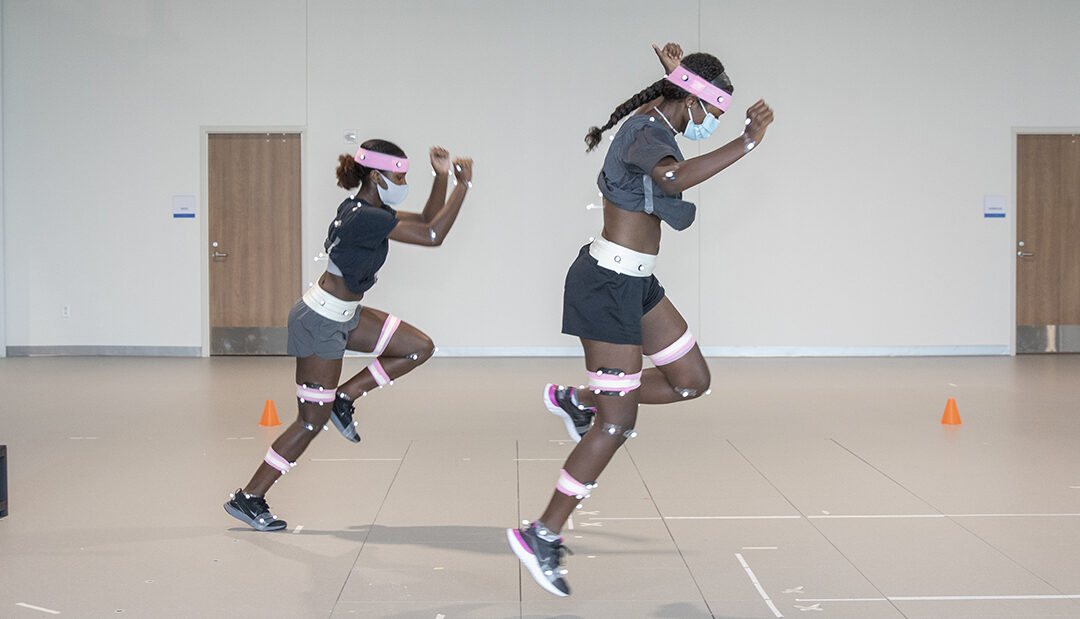The Purpose
Sports specialization occurs when an athlete focuses on only one sport, year-round. More than ever, young athletes are concentrating on a single sport, which has resulted in an increase of overuse injuries due to a lack of variation in their training and no real off-season. Data collected from the SAFE Program will be a great resource to help our team identify who might be at the greatest risk of injury.
The Process
Through the SAFE Program, healthy athletes go through a series of performance tests that evaluate their strength, speed, agility and flexibility. In addition, the Movement Science team uses high-speed motion capture to analyze each athlete’s motion during dynamic movements, such as running and jumping, and sport-specific tasks based on their primary sport, like penalty kicks, layups or back handsprings. Small reflective markers are placed on the athlete’s body during this motion analysis testing help our team accurately measure how each joint moves in 3D.
One of the most important aspects of the SAFE program is injury surveillance. Each athlete receives a monthly survey asking if they have sustained an injury in the previous month. If so, they are asked follow-up questions regarding details about where and how the injury occurred. Athletes who are interested may come back for a second round of testing after six months or a year. This will provide our team the opportunity to analyze changes in performance due to growth, improvement or an injury.
The Goal
The SAFE program will allow the Movement Science team to create a database of assessments in hundreds of athletes across all ages, sports and skill level. Then, injury surveillance after SAFE testing will provide our experts with additional information to see if any of the movement or performance measures could potentially point to a future injury. Ultimately, the goal is to create an injury prevention program, using these same SAFE tests, that can provide athletes with an individualized, comprehensive performance report which includes an injury risk assessment.
Leader of the project and assistant director of the Movement Science Lab in Frisco, Sophia Ulman, Ph.D., is excited to see this initiative come to life. “I have a passion for sports and the SAFE Program is a project that can really make an impact in the lives of young athletes,” says Ulman. “Although we are still in the data collection phase, once we have enough information, we hope to be a resource for our highly athletic community. We want to be a go-to center for young athletes – before, during and after an injury. This program will eventually allow us to provide injury prevention assessments, help determine injury risk and interpret prevention strategies – helping athletes stay safe and in the game.”
To learn more about Movement Science, please call 469-515-7160 or email MSL.Frisco@tsrh.org.

